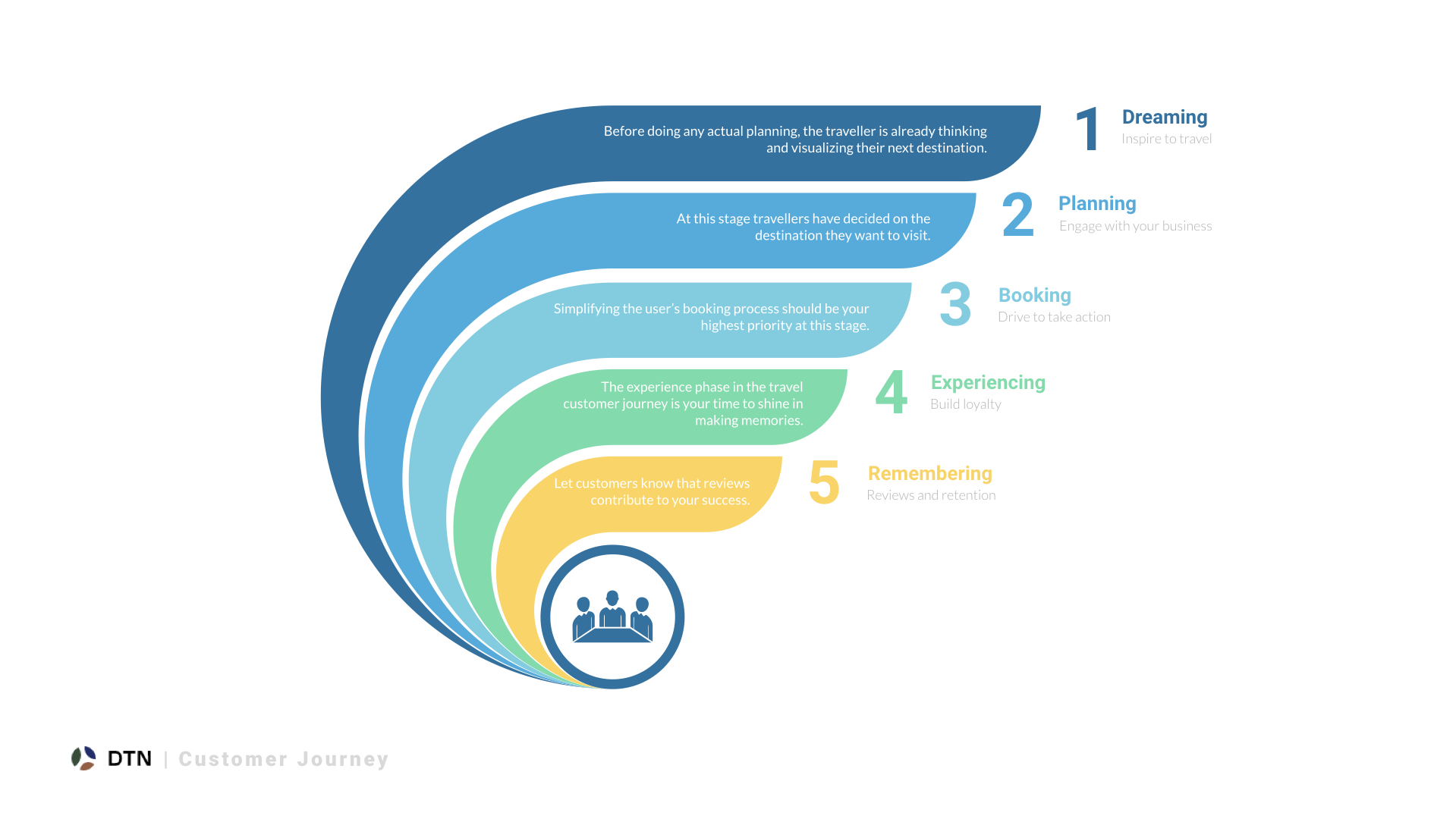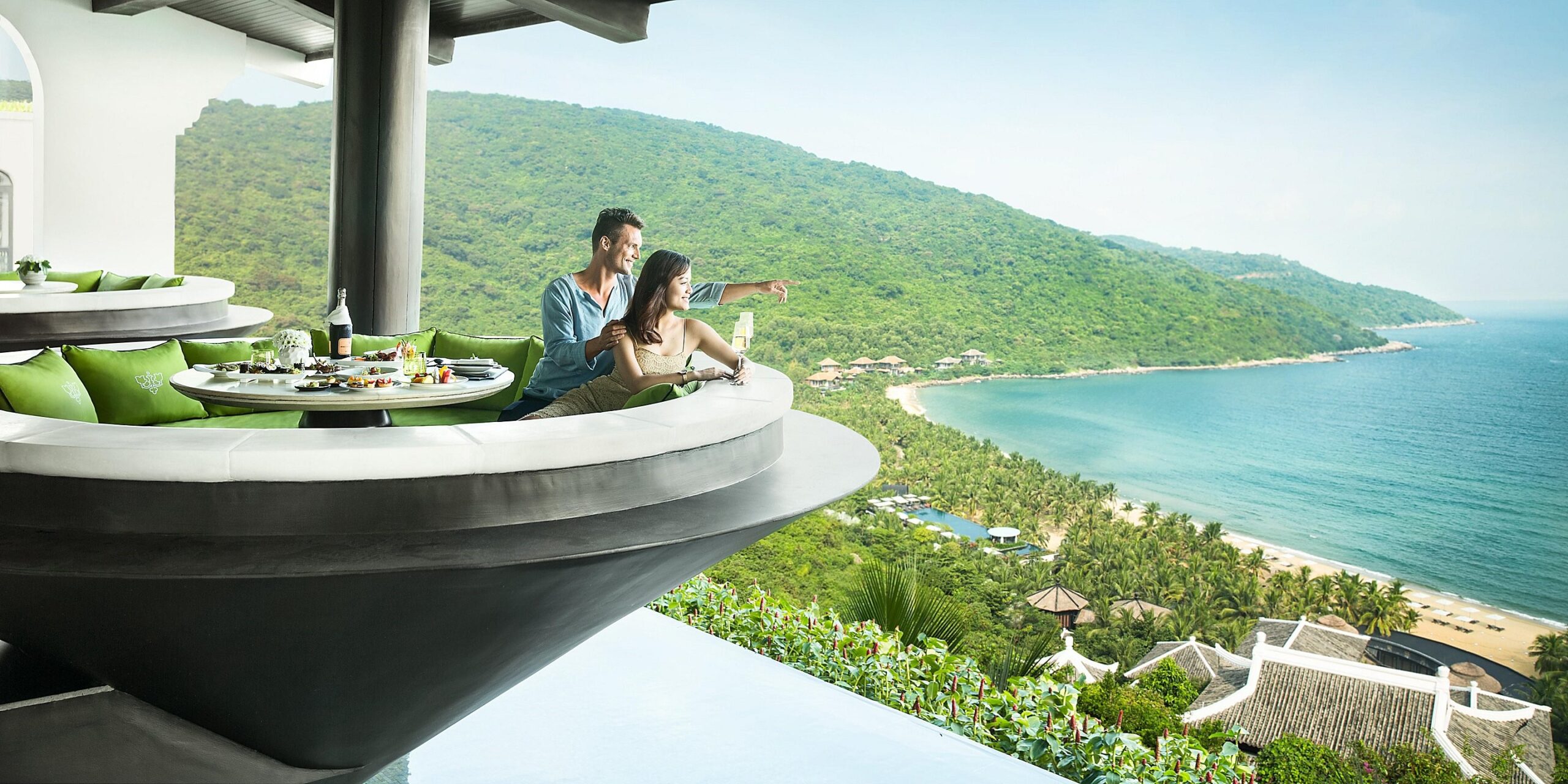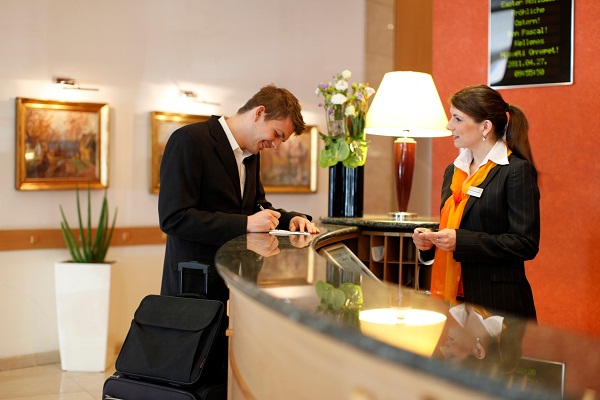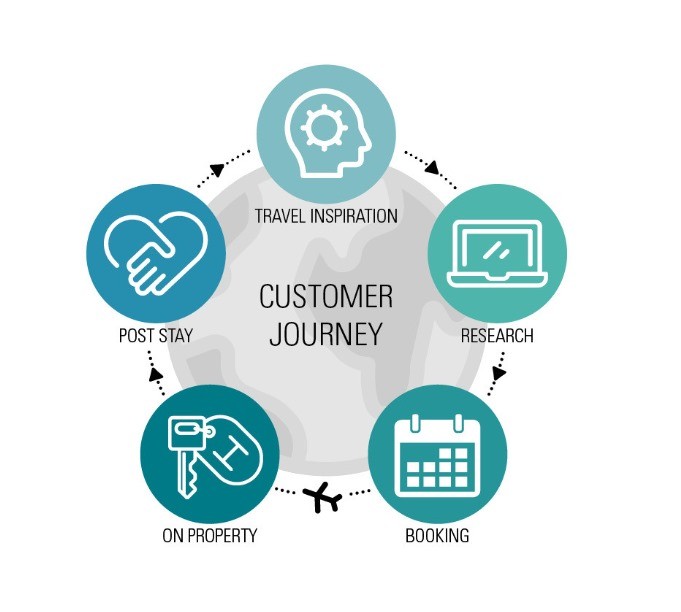When it comes to hotel marketing, the key to driving more bookings is understanding how travelers come to your property in the first place. Where do they first learn about your hotel, property, or homestay? What information do they look for when planning a trip, what websites do they visit, and where do they book?
Only when you have answers to these questions will you truly know where to find your customers, how to attract them to choose your hotel, and how to set the stage for a positive guest experience?
Understanding the traveller journey is important for hoteliers and landlords as it will help you build your marketing plan, make decisions on resource allocation and ensure the right message is delivered to the right audience and on the right channels. This will help drive more bookings, increase revenue and increase customer satisfaction.
Customer Journey: Funnel or Circle?
Traditionally, marketers have used the purchase funnel model to illustrate the customer journey. In this model, the customer journey begins at the widest end of the funnel: when the buyer first begins the shopping process and considers many options. As the customer progresses through the purchase process, the customer considers and eliminates several options, and the funnel gradually narrows. At the bottom of the funnel, the customer purchases a product and the journey ends.
But what happens after the purchase? A few years ago, McKinsey & Company proposed an alternative circular model that includes the post-purchase phase and the cyclical nature of purchase and repurchase throughout the customer lifecycle. This model has a “loyalty loop” and is highly applicable to the hotel business. When a guest is satisfied with their accommodation choice, they can skip the dreaming and planning phase on their next trip and go straight to rebooking that same property.
Five Stages of Travel Journey
Marketers use a variety of symbols to describe the five stages of the travel journey.
wishes in the customer journey. For hospitality operators, Google’s Five Stages of the Travel Journey may be useful to you. Below we explain what happens at each stage and how hotel marketers can connect with travelers and track their preferences at every touchpoint. Today, many of these touchpoints take place across digital channels. With the help of hotel technology, hotels can automate tasks to save time and ensure they don’t miss out on opportunities.

Stage 1: Daydreaming
During this initial stage, travelers are looking for inspiration. They are open to ideas and exploring a variety of options. They may be considering several destinations and comparing transportation, accommodation, and activity options at each destination. During this stage, search activity tends to be broad and destination-oriented, favoring platforms such as Google, Tripadvisor, destination marketing organization (DMO) websites, and Social Media.
Marketing Strategy for Hoteliers and Homeowners in Phase 1:
- Make sure your Google Business Profile is accurate. Information from these listings is displayed on Google Search, Google Hotel Search, and Google Maps; helping travelers discover your property.
- Review your TripAdvisor listing to make sure it’s fresh and up to date.
- Make sure you are listed on the websites of local, regional and national tourism marketing organizations or tourist offices.
- Your listings on each of these platforms need to be complete and up to date with detailed information about your location and disposables, quality photos and videos, and compelling descriptions to answer questions customers may have at this stage of their journey.
- Share photos, videos, and other content on Facebook, Instagram, and YouTube to promote your local activities and events.
Phase 2: Planning
During this decision stage, travelers narrow down their options, select a destination, and evaluate accommodation and activity options. Customers will consult online travel agencies (OTAs) and review sites, which are particularly popular during this stage, to compare location information, amenities, prices, and reviews. Travelers also look at hotel websites to learn more.

Planning
Marketing Strategies for Hoteliers and Landlords in the Planning Phase:
- Diversify your distribution channels. The more channels you are listed on, the more likely travelers are to find you. This includes not only the most popular OTAs, but also search engines, GDSs for bookings by travel agents and other suppliers, and, if available, homestay rental sites such as Airbnb, Homeaway, Vrbo, and Hostelworld. Use a channel manager to effectively manage your rates and availability across multiple sites.
- Make sure your OTA listing is complete with descriptions, photos, amenities, and other useful information like wifi, BBQ area, etc. The quality of your listing is important because it affects your ranking on OTA sites. The higher your quality score, the more visibility you will have. It will also help increase conversion rates by providing travelers with the information they are looking for.
- Respond to reviews promptly, troubleshoot complaints, and encourage your staff to earn five-star reviews. Traveler reviews and ratings also influence OTA rankings and can have a big impact on booking decisions.
- Optimize your website. Content should be easy to navigate and SEO optimized, with all the information your website visitors need to make a booking decision. The website should also be Mobile-friendly for the best user experience. This should make it easy to contact your property and answer questions quickly.
- Focus on visual Storytelling. Travel planners tend to skim text quickly and spend more time looking at photos and videos. Striking visuals capture the imagination, evoke feelings, and inspire emotions like desire, nostalgia, relaxation, productivity, and joy.
- Make sure your Digital Marketing Strategy includes a Paid Search campaign to reach travel planners with ads on Google, Facebook, and Instagram.
Phase 3: Reservation
Travelers have narrowed down their options for a hotel and are ready to book. Will it be your hotel? During this stage, travelers tend to visit and revisit multiple sites such as OTAs, search platforms, and hotel websites to compare prices and deals before making their final choice.
Marketing Strategies for Hoteliers and Hosts in the Booking Phase:
- Maintain a dynamic pricing strategy: Your goal is not just to sell rooms, but to sell them at the highest price that travelers are willing to pay. This means constantly adjusting prices to reflect changes in market demand, occupancy rates, and competitor pricing. Revenue management software helps you optimize and automate this process, ensuring you always offer the right price to the right guest at the right time.
- Search channels: Platforms like Google Hotel Search, Kayak, Booking.com, Traveloka, and Trivago are especially popular at this stage for comparing prices across booking channels. A Search Marketing strategy will help you maintain parity across channels and compete with OTAs for bookings.
- Diversify your offerings: Offer a variety of room types and packages to appeal to a variety of travelers, from budget travelers and business travelers to special event attendees and last-minute bookers. Remember that traveler preferences change over time. According to Cloudbeds hotel trends, today’s post-pandemic travelers have more money to spend, are booking longer stays, and prefer flexible cancellation policies.
- Make direct bookings easy: A fast and reliable hotel booking system with an integrated booking engine will allow travelers to check availability and book in real-time on your website using a credit card or other payment option. Secure the best rates and offer direct and limited-time offers to create a sense of urgency for customers to book as soon as possible.
- Send confirmations summarizing the details of your guest’s stay using automated Email software.
Phase 4: Experience
The process doesn’t end with the booking; in some ways, it’s just beginning. This phase begins when the guest arrives and continues through to departure. Here are some opportunities to market and enhance the guest experience:

Customer Experience
Marketing strategies for hoteliers and hosts in the Experience Phase:
- Ensure a seamless experience by sending automated pre-stay emails or welcome messages to invite guests to start planning. Include special offers for room upgrades, extra breakfast, dining room reservations, or additional room amenities.
- Make the process easy for guests by offering remote check-in and contactless payment options, as well as self-check-out options.
- Use messaging services to stay in touch with guests and send them important notifications during their stay on channels they choose to use, such as Facebook Messenger or WhatsApp.
- Check in with guests throughout their stay with a property survey. This will give you the opportunity to address any issues with your guests and make the experience memorable.
Phase 5: Sharing
This phase begins after the guest departs and continues to subsequent destinations as the travel journey resumes. This is when guests are most likely to share their experience with others through word of mouth, on social media, or in online reviews.

Customer experience survey
Marketing Strategies for Hoteliers and Homeowners in the Sharing Phase:
- Send out automated post-stay surveys to collect feedback or ask guests to post online reviews on travel sites or your hotel website.
- Invite guests to follow you on Facebook and Instagram, and share photos and reviews of their stay.
- Invite them to join your Loyal Customer program to take advantage of special perks and offers.
- Send special offers to entice customers to come back and send monthly newsletters to keep your business top of mind.
And that brings us to the end of the traveler journey, although it certainly isn’t the end of your relationship with your guests. If you’ve done a great job of communicating with your guests and attending to their needs at every touchpoint, they may skip the Dreaming and Planning stages and go straight to rebooking your property on their next trip. The more guests who follow this loyalty loop, the more marketing dollars you save and the more loyal guests you’ll have.
Comment Policy: We truly value your comments and appreciate the time you take to share your thoughts and feedback with us.
Note: Comments that are identified as spam or purely promotional will be removed.
To enhance your commenting experience, consider creating a Gravatar account. By adding an avatar and using the same e-mail here, your comments will feature a unique and recognizable avatar, making it easier for other members to identify you.
Please use a valid e-mail address so you can receive notifications when your comments receive replies.
